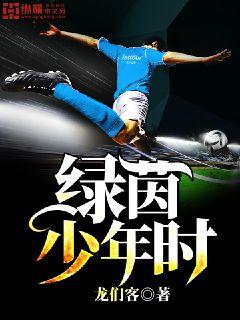中国对日本预选赛是哪天|jrs直播篮球比赛在线观看
- 来源:jrs直播网
- 2024-11-22 09:16:38

### 文章摘要
本文详细探讨意大利球员Migliaccio的职业生涯、成就及个人生活。Migliaccio在足球生涯中的成就和影响力将被深入剖析,他的个人生活以及在职业领域的突出表现将为读者展示一个全面的形象。
---
1、职业生涯起步
Migliaccio的足球生涯始于他在意大利本土的早期培训和青年队时期。他在这一阶段的成长和发展如何奠定了他后来的职业基础?
随着时间的推移,他是如何从青年队踏入职业足球的大门?他的早期职业经历如何塑造了他作为球员的风格和技术?
探索Migliaccio在不同俱乐部的职业生涯,他在球场上的角色和位置如何逐步确立?
2、职业生涯巅峰
Migliaccio在职业生涯中的巅峰时期是如何达到的?他所效力的顶级俱乐部和国家队成就了哪些辉煌的比赛和荣誉?
分析他在顶级联赛或国际比赛中的关键表现,以及他在球队中的领导力和影响力。
探讨Migliaccio在球场上的技战术特点,以及他是如何在不同比赛场合中展现出自己的独特能力和贡献的。
3、成就与荣誉
详述Migliaccio在其职业生涯中取得的主要成就和荣誉,这些包括俱乐部级别和国家级别的重要奖项或冠军。
分析他获得这些成就背后的努力、团队合作和个人才能,以及这些成就对他职业生涯的深远影响。
探讨他如何通过这些成就和荣誉来塑造自己的足球传奇。
4、个人生活与影响
Migliaccio在足球场外的个人生活是怎样的?他的家庭背景和个人生活对他的职业生涯有何影响?
分析他在社会和慈善事业方面的活动,以及他如何利用自己的知名度和影响力来帮助他人。
探讨他在退役后可能会从事的领域,以及他对未来的职业和个人目标的展望。
总结:
通过对Migliaccio职业生涯、成就及个人生活的深入探讨,不仅可以了解他作为足球运动员的辉煌历程,还能窥见他在足球之外的个人魅力和社会影响力。Migliaccio以其卓越的球技和积极的社会参与,成为足球界的重要人物之一。
### 文章摘要
胡安,作为足球界的一颗新星,经历了从天才新秀到足球领袖的演变过程。本文将深入探讨他职业生涯的四个关键阶段:早期崛起与天赋展示、成为球队核心的过渡、领袖角色的确立以及在球场外的影响力扩展。通过这些阶段,胡安如何从一个有潜力的年轻球员成长为一名领袖型球员,引领球队迈向辉煌,将在本文中得以详细展示。
---
1、早期崛起与天赋展示
胡安作为年轻球员进入职业足球,展现出色的天赋和技术。他早期在青年队和青训营的表现备受瞩目,吸引了球探和教练的注意。
随着他的加盟和早期比赛经历,胡安展示了出色的技术和战术理解,逐渐在球队中崭露头角。
他在青年比赛和早期职业生涯中所取得的成就,为他未来成为球队中的核心打下了坚实的基础。
2、成为球队核心的过渡
随着时间的推移,胡安逐渐在球队中扮演起更为重要的角色。他不仅在比赛中展现出色,还在训练场上展示出强烈的领导能力。
他的技术和领导才能使他成为球队的灵魂人物,他在关键时刻的表现逐渐赢得了队友和教练的信任。
这一阶段的胡安,不仅仅是一名球员,更是球队中不可或缺的核心成员。
他的影响力不仅限于场上,还扩展到了球队内部的团结和士气提升。
3、领袖角色的确立
随着职业生涯的深入,胡安逐渐确立了自己作为球队领袖的地位。他在比赛中的表现和精神领导力,使他成为球队的象征。
他不仅仅是在场上的领袖,还能够在场下通过言行影响和激励全队。
胡安在困难时期展现出的领导力,帮助球队走出困境,实现了多个关键时刻的逆转胜利。
他的领导风范和成熟的态度,赢得了球迷和媒体的广泛赞誉。
4、在球场外的影响力扩展
除了在比赛中的出色表现和领导作用,胡安还通过慈善活动和社会责任项目扩展了自己的影响力。
他利用自己的名声和地位,积极参与社区项目,为社会做出积极贡献。
胡安不仅仅是一名足球运动员,更是一位社会领袖和榜样,他的影响力超越了足球领域的范畴。
他的行为和言论代表了他作为一名公众人物的责任感和影响力。
总结:
胡安从一个天赋横溢的年轻球员,逐步成长为一名足球领袖,他通过自己的努力和才能,在球场内外展现了非凡的影响力。他不仅是球队的核心和领袖,还在社会和慈善事业中树立了良好的榜样。
胡安的职业生涯不仅是足球成功的故事,更是一段激励人心的成长历程,展示了他作为领袖和公众人物的独特魅力。
Certainly! Here's the structured article on "Optimizing Training Performance through Nutrition and Diet for Professional Athletes":
**Abstract:**
Professional athletes rely heavily on nutrition and diet to enhance their training performance. This article explores key factors that optimize their performance through dietary strategies. It examines the role of macronutrients, micronutrients, hydration, and timing of meals in maximizing athletic potential. By understanding and implementing these factors, athletes can achieve peak performance and maintain optimal health.
---
**1、Macronutrients:**
Macronutrients play a fundamental role in the diet of professional athletes, influencing energy levels, muscle recovery, and overall performance.
Athletes typically require a balanced intake of carbohydrates, proteins, and fats to meet their energy demands and support muscle repair.
Carbohydrates serve as a primary fuel source, especially during high-intensity activities, emphasizing the importance of adequate intake and timing to sustain performance.
1、Proteins:
Proteins are essential for muscle repair and growth, with athletes needing slightly higher amounts to recover effectively from training sessions.
Timing protein consumption around workouts is crucial for maximizing muscle synthesis and adaptation to exercise-induced stress.
A variety of protein sources, including lean meats, dairy, and plant-based options, offer athletes flexibility in meeting their nutritional needs.
2、Fats:
Healthy fats contribute to sustained energy levels and support overall health in athletes, emphasizing sources like nuts, seeds, and fatty fish.
A balanced intake of omega-3 and omega-6 fatty acids aids in reducing inflammation and optimizing recovery post-training.
Adjusting fat intake based on training intensity and individual metabolic needs helps athletes maintain optimal body composition and performance.
3、Carbohydrates:
Carbohydrates are critical for replenishing glycogen stores and providing quick energy during intense exercise sessions.
Choosing complex carbohydrates such as whole grains and vegetables ensures sustained energy release and supports prolonged athletic performance.
Strategic carb-loading before competitions or high-demand periods helps athletes maximize glycogen storage and enhance endurance.
---
**2、Micronutrients:**
Beyond macronutrients, micronutrients are essential for maintaining overall health, supporting immune function, and optimizing athletic performance.
Athletes require adequate intake of vitamins and minerals to support physiological processes, including bone health, oxygen transport, and muscle contraction.
Key micronutrients such as iron, calcium, vitamin D, and antioxidants play crucial roles in reducing the risk of injury and illness among athletes.
1、Iron and Calcium:
Iron is vital for oxygen transport and energy production, particularly significant for endurance athletes to prevent fatigue and optimize performance.
Calcium supports bone health and muscle function, essential for maintaining skeletal integrity and reducing the risk of stress fractures.
Ensuring sufficient intake of these minerals through diet and, if necessary, supplementation helps athletes meet their unique nutritional demands.
2、Vitamins and Antioxidants:
Vitamins such as vitamin D, C, and E contribute to immune function and recovery, aiding in the repair of muscle tissue and reducing oxidative stress.
Antioxidants from fruits, vegetables, and nuts help mitigate exercise-induced inflammation and support cellular repair processes post-exercise.
Strategies to incorporate a diverse range of micronutrient-rich foods into an athlete’s diet promote overall health and optimize training adaptations.
3、Hydration:
Hydration is critical for maintaining performance and preventing dehydration-related complications during training and competition.
Athletes should monitor fluid intake to replace losses through sweat, adjusting consumption based on environmental conditions and individual sweat rates.
Optimal hydration supports thermoregulation, nutrient transport, and cognitive function, enhancing overall athletic performance and recovery.
---
**3、Timing of Meals:**
The timing of meals and nutrient intake around training sessions is crucial for optimizing energy availability, promoting recovery, and supporting adaptation to exercise stress.
Strategic meal timing helps athletes maximize glycogen storage, enhance muscle protein synthesis, and minimize muscle breakdown.
Pre-exercise nutrition focuses on providing adequate carbohydrates for fuel and minimizing gastrointestinal distress during workouts.
1、Pre-Exercise Nutrition:
Consuming a balanced meal or snack containing carbohydrates and a moderate amount of protein 2-4 hours before exercise provides sustained energy and supports muscle function.
Hydration before exercise ensures adequate fluid balance and enhances thermoregulation during physical exertion, optimizing performance and reducing the risk of dehydration.
2、Post-Exercise Recovery:
Immediately following exercise, consuming a combination of carbohydrates and proteins within the first 30 minutes to 2 hours supports glycogen replenishment and muscle repair.
Timing protein intake post-exercise stimulates muscle protein synthesis, facilitating recovery and adaptation to training-induced stress.
Incorporating micronutrients and fluids into post-exercise meals aids in rehydration, replenishment of electrolytes, and overall recovery.
3、Nutrient Timing Strategies:
Strategically timing meals and snacks throughout the day maintains stable blood sugar levels and sustains energy for consistent training performance.
Adjusting nutrient intake based on training volume and intensity helps athletes meet their energy demands and achieve optimal nutrient timing for enhanced performance.
Individualized nutrition plans tailored to training schedules and performance goals optimize nutrient timing strategies, supporting long-term athletic success.
---
**4、Conclusion:**
Optimizing training performance through nutrition and diet involves a comprehensive approach focusing on macronutrients, micronutrients, hydration, and meal timing.
By understanding the role of each component and implementing evidence-based strategies, athletes can enhance performance, support recovery, and maintain overall health.
Continued research and personalized nutrition plans are essential to meet the unique needs of professional athletes and maximize their athletic potential.
Overall, integrating these key factors into a structured nutrition plan empowers athletes to achieve peak performance and excel in their respective sports.
马拉多纳球场:足球传奇的圣地
【摘要】马拉多纳球场是足球界的圣地,承载着无数足球传奇,象征着激情与荣耀。本文将从球场的历史、文化底蕴、球迷狂热以及球场的大事记等四个方面对这座传奇球场进行详细阐述,带领读者领略这片热情与梦想的土地。
**1、历史渊源**
马拉多纳球场位于阿根廷首都布宜诺斯艾利斯,历经数十载风雨,见证了无数足球传奇的诞生。球场建成于1940年,得名于阿根廷足球传奇马拉多纳,曾多次承办世界杯等国际足球盛事。球场所在地曾是一片贫民窟,而今已成为足球魂归地,是无数球迷向往的朝圣之地,传承着无数足球的故事。
【历史的文化底蕴】
马拉多纳球场的文化底蕴深厚,融合了阿根廷人民的激情与热血。每一场比赛都是一次狂欢,球场内外充斥着民间艺术、音乐和人文关怀。球场内外群情激昂的音符构成了马拉多纳球场特有的韵律,激励着球迷与球员勇往直前,创造新的辉煌。
【球迷的狂热情感】
马拉多纳球场的球迷以其狂热而闻名,他们是球场不可或缺的一部分,与球场共同构成了足球文化的圣地。球场的看台上聚集了数以万计的球迷,他们为自己钟爱的球队呐喊助威,是场上的第十二人。球场外,他们组织着各种庆祝活动和慈善事业,为球迷文化注入了更多的生机与活力。
【大事记的变迁】
马拉多纳球场承载着太多足球的传奇与荣耀,每一个大事记都昭示着球场的辉煌历程。从世界杯的诞生和辉煌,到马拉多纳的传奇时刻,每个瞬间都被刻骨铭心地记录在这片热情的土地上。这些大事记不仅见证了球场的辉煌历程,也成为了球迷文化的珍贵遗产,激励着无数足球梦想家向前奋进。
【总结】
马拉多纳球场,是足球传奇的圣地,承载着数不尽的激情与荣耀。从历史渊源到文化底蕴,再到球迷狂热和大事记的变迁,这座球场已经不再只是一个足球场,而是一座象征着足球精神的圣殿。它的每一块土地,都沁透了热情与梦想,每一个瞬间,都闪耀着足球的光芒。前不着村后不着店的马拉多纳球场,成为了无数人心中的信仰,激励着他们不断前行,创造新的辉煌。
文章摘要的内容
1、萨文球员的历史
萨文球员的起源及发展
关键历史事件的影响
文化和社会背景下的发展
2、萨文球员的成就
在比赛中的突出表现
个人荣誉和奖项
球队和国家的成就贡献
3、萨文球员的影响
对球迷和社区的影响
在全球范围内的影响力
对足球文化和体育界的长远影响
4、萨文球员的总结与归纳
萨文球员在历史上的地位
其成就对今后的影响
对未来足球发展的启示
总结:
文章总结内容第一自然段
文章总结内容第二自然段
文章摘要的内容
1、起步阶段
约旦女足从最初的无名小卒开始,经历了哪些挑战和成长?他们是如何在本土和国际舞台上崭露头角的?
文字阐述内容
文字阐述内容
文字阐述内容
2、挑战与逆境
在发展过程中,约旦女足面对了哪些困难和挑战?这些困难是如何影响球队的成长和壮大的?
文字阐述内容
文字阐述内容
文字阐述内容
3、国际舞台的闪耀
约旦女足如何在国际赛场上展现出自己的实力?他们取得了哪些突破和成就?这些成就对于球队和国家的意义又是如何?
文字阐述内容
文字阐述内容
文字阐述内容
4、影响与未来展望
约旦女足的成功经验对本国和全球女足运动有何影响?未来,他们将如何继续发展和影响女足运动的进程?
文字阐述内容
文字阐述内容
文字阐述内容
总结:
约旦女足从无名小卒到国际舞台的闪耀征途,不仅是一支足球队伍的成长史,更是一个国家足球文化发展的缩影。通过战胜种种困难和挑战,他们展示了坚韧和才华,为女性足球在中东地区树立了榜样。未来,随着足球在约旦的进一步普及和支持,约旦女足有望继续在国际赛场上取得更大的成就,为全球女子足球运动的发展贡献更多力量。
文章摘要:韩国足球:场外风云
韩国足球的光芒不仅仅在球场上闪耀,场外的风云更是令人瞩目。本文将深入探讨韩国足球界的四大方面:政治干预、俱乐部经营、球迷文化以及国际交流。通过对这些方面的分析,揭示出韩国足球背后的种种复杂关系,以及这些因素如何影响着韩国足球的发展与命运。
1、政治干预
韩国足球长期受政治干预的影响,政府、政治人物对足球运动的干预程度颇深。这种政治介入既有正面推动作用,又可能引发负面效应。
政府通过资金支持、政策倡导等方式推动韩国足球事业的发展,但也存在利益输送、权力斗争等问题。
政治人物介入足球事务,既可能提升国家形象,也可能使足球事务受到政治操控,影响公平竞争。
2、俱乐部经营
韩国足球俱乐部的经营状况直接影响着联赛水平和球员成长。然而,俱乐部经营中普遍存在着一系列问题。
一些俱乐部由财团或大企业控制,存在资金雄厚但管理混乱、效率低下的情况。
另一些俱乐部则面临财政困难,缺乏有效运营模式,导致球队实力和影响力逐渐下滑。
俱乐部经营的混乱不仅影响着职业球员的生存发展,也削弱了韩国足球整体竞争力。
3、球迷文化
韩国足球的独特球迷文化是其一大特色,但也存在一些问题和挑战。
球迷热情高涨,常常为球队带来强大的支持力量,但也可能因情绪失控而引发暴力事件。
球迷文化的发展受到社会环境、媒体引导等多方面因素的影响,需要综合治理和引导。
4、国际交流
韩国足球与世界各国的交流合作对其发展至关重要,但也面临着一些挑战。
国际交流能够提升韩国足球的水平和影响力,但也可能导致文化冲突和身份认同问题。
韩国足球需要在国际交流中保持开放心态,积极吸收外部经验,同时也要保持自身特色和传统。
总结:
韩国足球的发展受到政治、经济、文化等多方面因素的影响,其中政治干预、俱乐部经营、球迷文化和国际交流是影响其发展的重要因素。韩国足球需要在政治干预的合理范围内发展,改善俱乐部经营状况,引导健康球迷文化,加强国际交流合作,以实现长期可持续发展。
上一篇: jrs直播官方app
下一篇: nba直播在线jrs直播吧










